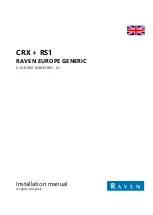
LEA-5, NEO-5, TIM-5H - Hardware Integration Manual
GPS.G5-MS5-09027-A2
Released
Design-in
Page 34 of 68
25.4 ± 0.1 mm [1000 ± 4 mil]
25
.4
±
0
.1
m
m
[
10
00
±
4
m
il]
1.
9
m
m
[7
5
m
il]
2.
8
m
m
[1
10
m
il]
1.
5
m
m
[5
9
m
il]
0.
8
m
m
[3
2
m
il]
1.0mm
[39 mil]
0.8 mm
[32 mil]
1.
27
7
m
m
[5
0.
27
m
il]
Figure 22: TIM-5H footprint
Stencil: 180 m
23.5 mm [925 mil]
26.0 mm [1023.5 mil]
28.7 mm [1130 mil]
0.
9
m
m
[3
5.
5
m
il]
0.
7
5
m
m
[2
9.
5
m
il]
Figure 23: TIM-5H paste mask
The paste mask outline needs to be considered when defining the minimal distance to the next
component.
The exact geometry, distances, stencil thicknesses and solder paste volumes must be adapted to the
specific production processes (e.g. soldering etc.) of the customer.
2.5.2
Placement
A very important factor in achieving maximum performance is the placement of the receiver on the PCB. The
connection to the antenna must be as short as possible to avoid jamming into the very sensitive RF section.
Make sure that RF critical circuits are clearly separated from any other digital circuits on the system board. To
achieve this, position the receiver digital part towards your digital section of the system PCB. Care must also be
exercised with placing the receiver in proximity to circuitry that can emit heat. The RF part of the receiver is very
sensitive to temperature and sudden changes can have an adverse impact on performance.
The RF part of the receiver is a temperature sensitive component. Avoid high temperature drift
and air vents near the receiver.















































